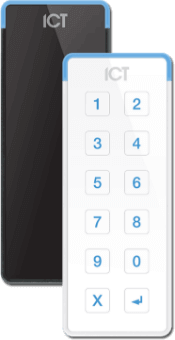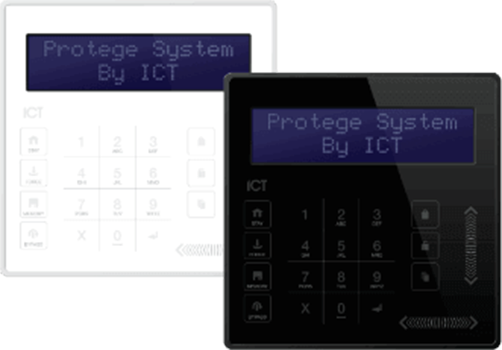Video MGMT System
 Access Control
Access Control
Voice & Data Wiring
 Burglar Alarm
Burglar Alarm
 Fire Alarm
Fire Alarm
Video MGMT System
Voice & Data Wiring
THOUGHT CENTER > Blog > Access Controls
November 10, 2023
Too busy to read? Here’s a summary:
Ah, the world of locks and doors! It's not about mechanical keys anymore.
These days, businesses and organizations are turning to electronic entry management systems for automated decision-making and a comprehensive array of authorization policies for flexible and dynamic entry management protocols.
One such policy or set of rules for assessing credentials and access permissions is known as Discretionary Access Control (DAC). But what exactly is discretionary access control, and how can it benefit your business?
Keep on reading to unlock the secrets now.
DAC is a type of physical access control in which the owner or administrator of the system can set access privileges and even share administrative control at their discretion. This is in contrast to other policies for assigning access privileges, in which the privileges associated with a credential are determined by rules enacted by a central authority.
While DAC is not recommended for large facilities with more than forty users and multiple access point security levels, it’s perfect for small businesses and organizations that don’t have too many users for effective management.
According to SkyQuest, the global electronic access control market is projected to soar from $9 billion to $17 billion by 2030, underscoring the rapid shift toward modern access control and the benefits of automated door security and entry management.
One of the main advantages of DAC is its flexibility. The primary administrator, or “owner,” has the discretion to grant or deny access to credential holders on an individual or group basis.
What’s more, the primary administrator can share access assignment privileges with trusted staff.
In practice, this means that a chain restaurant may grant DAC to on-site managers, who would then use their discretion to assign or withdraw access privileges as needed for on-the-ground security and workflow needs. Further, a trusted staff member may be granted administrative control over privilege management while a manager is on vacation.
These flexibilities are especially useful in environments where access needs change frequently, and administrative duties can be shared without placing high-value assets in jeopardy.
This means that the owner can also delegate administrative powers, either permanently or temporarily, to other individuals if they choose to do so.
While DAC empowers administrators with flexibility, it can also introduce security risks if managed carelessly. Be sure to enact clear policies and train administrators so that access privileges are granted judiciously.
With DAC, you can tailor security measures to specific needs. For example, applying the principle of least privilege, a project manager would be authorized to access necessary files or rooms while team members would have fewer privileges. The principle of least privilege or least access reduces security breaches by strictly limiting access to only those who truly need it.
If there's ever a security breach, it's easier to trace back and determine who was in the area during the breach event.
It's essential to regularly audit DAC systems to track who has access to what. Audits help ensure that only the right people have access and that any potential security risks are addressed promptly.
Ensure that all administrators and end users are trained on the importance of security and how the DAC system works. This will help reduce the risk of unintentional breaches.
Many modern security systems, such as those for CCTV, fire safety, and intrusion detection, can be integrated with access control systems. Integration with security cameras, in particular, ensures that any unauthorized attempts are captured on video.
With threats becoming more sophisticated, it's crucial to have a robust security system in place. DAC offers a flexible and adaptable access control policy that can be tailored to specific needs. If you're considering implementing a DAC system (or any other security solution, for that matter), don't hesitate to reach out to the team here at Mammoth Security.
We’re Connecticut’s one-stop shop for purchasing and installing advanced commercial-grade security systems. Our crew has the expertise to guide you to the right systems and devices for your security and workflow needs.
Just click to contact us and fill out the form to get started with a 100% free site survey and consultation with a friendly expert from our team.
NOT COMPLETELY SURE?
860-748-4292DAC allows for tailored security measures, such as applying the principle of least privilege. The principle of least privilege refers to policies that restrict individuals to only the areas or resources they need to access for their roles.
In the event of a security breach, DAC systems make it easier to trace back and identify who accessed the area during the incident.
DAC offers flexibility, allowing the primary administrator to grant or deny access and share administrative control. It also provides customized security measures tailored to specific needs and ensures accountability in case of security breaches.
By applying the principle of least privilege, DAC ensures that individuals only have access to areas or files they genuinely need.
The best access control systems are designed for integration with security and building management systems made by other manufacturers. Integrated access control systems are united with other systems, such as those for CCTV, fire safety, intrusion detection, automated HVAC management, and more. The result is supercharged situational awareness through data sharing between devices that can be leveraged for speedy incident responses and comprehensive, system-wide emergency protocols that save lives.
DAC allows administrators to authorize access based on specific needs, ensuring that individuals only access the resources they need.
Regular audits in any access control system are crucial because they track access events and help administrators recognize irregularities and potential security risks.